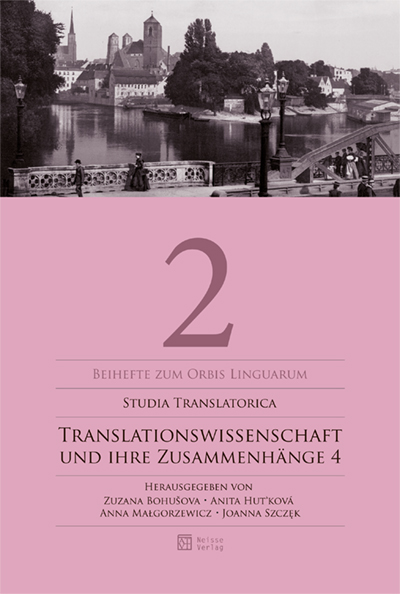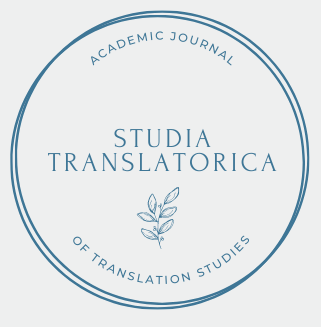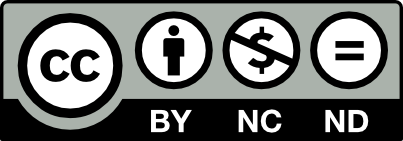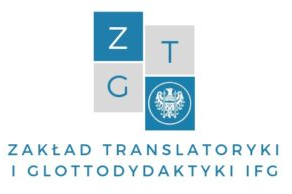
Studia Translatorica
Issue 2 (2011): Translationswissenschaft und ihre Zusammenhänge. The Translation Studies and its Contexts. Badania nad przekładem i ich konteksty
Edited by: Zuzana Bohušová, Anita Huťková, Anna Małgorzewicz, Joanna Szczęk
Äquivalenz und Adäquatheit in der Rechtsterminologie der EU und außerhalb - am Beispiel ausgewählter Abschnitte des deutschen und serbischen Ausländergesetzes / Terminology equivalence and adequacy in legal texts in and outside the EU - comparison study of extracts from the Law on foreigners in the Federal Republic of Germany and those from the Law on foreigners in the Republic of Serbia
DOI: --- (published online: 2020-11-20)
Keywords:
The legal reform in the Republic of Serbia aims to adjust its legal system to the ones stipulated by the Member States of the European Union. During this process many of the laws, regulations and legislations are being translated from the languages of the EU into Serbian. In this respect, it has been of great interest to study the texts of the two countries’ law on foreigners, the German and the Serbian one. Having compared the examples of the two named laws, one can primarily notice the lack of equality concerning the social need for the regulation of the inflow of foreign citizens in the two countries. Namely, the Federal Republic of Germany aims to prevent the increasing number of economic refugees while the Republic of Serbia does not recognize that type of problem. Based on theoretical principles, this lexical study of the examples excerpted from the two laws on foreign citizens and the terms of their residence in the two countries compares and shows lexical relations. In this respect, corresponding legal texts, dictionary equivalents and the translators’ own creative solutions are most commonly used for overcoming zero equivalence.
Analiza błędów w tłumaczeniu na język polski dokumentu spadkowego „Erbschein” / An analysis of mistakes made in the translation of “Erbschein” into Polish
DOI: --- (published online: 2020-11-20)
Keywords:
The article presents an analysis of mistakes made in the translation of “Erbschein” (a German inheritance document) into Polish. First, the author describes the role of this document in German inheritance law. Then he carries out a detailed analysis of mistakes made by a sworn translator in the certified translation of “Erbschein”. The translation was used as evidence in the proceedings before an appellate court to recognize a decision taken by a German court of first instance in the territory of Poland. The analysis is based on the criteria for classifying mistakes specified in ministerial guidelines on the assessment of specialist translations made by candidates for sworn translators. The author discusses factual, terminological, language, and formal mistakes found in the translation. Finally, he pays attention to other problems connected with the translation of the above-mentioned document into Polish.
Metaphern, Metaphernmodelle und metaphorische Abbildungsstereotypen im Vergleich und in der Übersetzung / Metaphors, Metaphorical Models and Metaphorical Stereotypes in Comparative and Translatological Light
DOI: --- (published online: 2020-11-20)
Keywords:
This article rewiews some aspects of the project “Kollektive Vorstellungswelten” (Zybatow 2006), which, generally speaking, tried to compare widespread and frequently used metaphorical models in the Russian and German mass media in the 1990th. The article deals, on the one hand, with theoretical questions regarding metaphors, metaphorical models and metaphorical stereotypes (the so called Abbildungstereotypen (mapping stereotypes) - Zybatow 1995; 1998) and their interrelationship with our conceptual system and, on the other hand, with the applied empirical corpus-based metaphor research from interdisciplinary view point. Yet the central issue of the article is to verify whether the metaphors are really so “culture-specific” and so “untranslatable” (Snell-Hornby 1996, 120) and to highlight possible translation strategies and procedures for different metaphors and metaphorical contexts in different texts and discourses.
Neutralisierungen beim Dolmetschen und Neutralität des Dolmetschers / Neutralization when interpreting and interpreter neutrality
DOI: --- (published online: 2020-11-20)
Keywords:
This contribution deals with the interdependency of neutralization as an interpretation strategy and with neutrality as an interpretation basic attitude. The author draws on her own application of neutralization when interpreting and on the fractal theory. This theory can also be used to clarify the neutrality requirements and the necessary impartiality of the professional interpreter. The interpreter interprets in serious negotiations such as in war, but also in everyday conflicts, for example: interpretation in controversial political negotiations; in court; in undiplomatic, unethical or vulgar diatribes; also in polemical or critical discourse; in hard business negotiations and so on.
Arte e traduzione. Appunti intorno Sophie Calle / Art and translation
DOI: --- (published online: 2020-11-20)
Keywords:
Paris. 2007. A woman has just received a farewell letter from her boyfriend. Not able to understand the end of their relationship, she asks 107 different women to read the letter and to try to say something about it. Every woman replies with her usual language: dance, Braille, philosophy, tarots, etc. This is Sophie Calle - French narrative artist - and her work is “Prenez soin de vous”. Above all interesting because of the interference between texts and visuals, this work is a collective group of translations in which translation studies and semiotic theories about interpretation, reading and transcodification can find many reasons of interest. The sign, in fact, is something that nobody can circumscribe only into a type of signs and every text always dialogues with other texts. The work of Sophie Calle can perfectly represent an interesting place for an application of the translation studies.
Přeládání jako zápas mezi jazyky (o české literatuře v maďarštině) / Translation as a fight between languages. On Czech literature in Hungarian
DOI: --- (published online: 2020-11-20)
Keywords:
The symbolic fight mentioned in the title of the paper refers to the struggle of the translator while trying to transpose a literary text into another language, in the given case from Czech into Hungarian. Although necessary and inevitable, this work sometimes seems to be hopeless: in fact it is nearly impossible to transform one language into the other. The objective of this paper is to discuss some of the major problems that arise during translation from Czech into Hungarian and to provide some literary examples in these fields. The two most frequent difficulties are: 1) the gap between the colloquial and literary Czech language that can be hardly reproduced in Hungarian, 2) the differences that occur in the fields of semantics, i. e. that the two languages refer differently to the reality: for some things and phenomena Czech language has a wide variety of words (e. g. the words in connection with beer and brewery), while Hungarian has hardly any for the same things. The conclusion of the paper is that it is important to investigate and to elaborate the above issues in the Czech-Hungarian context because it can lead to interesting results in the field of general translation studies, too.
Typológia posunov v autorskom preklade / Typology of shifts in the authorial translation
DOI: --- (published online: 2020-11-20)
Keywords:
In the paper prof. Michał Harpáň analyses the authorial poetry translations from Serbian into Slovak (by P. Bohuš, V. Hronec and V. Benková). The topic can be divided in two areas. The first one consists of culturology issues of bilingualism/dual literary domicile of writers who try to “return” a poetic utterance into a certain communication context through auto-translation. The second area is related to the theory of literature in which, in fact, the author takes the greatest interest. By the analysis of shifts between the Serbian and Slovak wordings of poems, he has tried to prove there are not two originals (Serbian and Slovak). However, neither the relation between the original and the translation takes its classic form. In the structure of the original he identified the metatext, i.e. translation elements, and in the structure of the translation the elements of the local (i.e. Slovak) literature, while both poetic communicates can also be considered to be originals.
Antonymicklý preklad / Antonymic translation
DOI: --- (published online: 2020-11-20)
Keywords:
The paper presents a number of translation practices and methods in order to explain the principles and types of so called antonymic translation, which is a specific translation operation depending neither on the translation direction, nor the compared languages. It is a typical facultative translation operation applied mainly by the expert translators. In her account the author first refers to the linguistic knowledge, as well as logical and semantic background of the observed phenomenon. Later she mentions the translatological works by Recker (1974) and Klaudy (1999). In the fourth analytical part she offers her own stratification created on the basis of interpretation of Slovak and Hungarian examples from fiction (1. negation, 1.1 intensification of negation, 1.2 reduction of negation, 2. conversion).
Zur Wahrung der literarischen Qualität in der Übersetzung am Beispiel der Wiedergabe von Sprichwörtern / About the retaining of literary quality in the translation
DOI: --- (published online: 2020-11-20)
Keywords:
This paper looks briefly at the Polish proverbs in the translation of W.S. Reymonts novel “Chłopi” into Danish. The proverbs and their metaphors are inherent components of the source text. Among the analyzed forms there are some Polish proverbs that have exact Danish equivalents, a couple of them which have approximate equivalents, and some of them which do not have equivalents in the target language. An optimal translation decision could be to find an exact equivalent for a Polish proverb in Danish. But the translator chose another strategy: he transferred not the referential meaning but the stylistic and emotional nuances of the proverbs (rhyme and rhythm) and in this way he retained the literary quality in the translation.
Althochdeutsche Obersetzungsliteratur in einem Modell translatorischen Wandels / Old High German Literary Translation in a Model of Translational Change
DOI: --- (published online: 2020-11-20)
Keywords:
Old High German Literature consists largely of literary translation. German as a written language that we encounter in later periods of literary production developed from a literary culture which came into being in the early Middle Ages. It is the result of translation (in the sense of transfer) in three aspects: political/ideological, cultural/spiritual and, last but not least, also linguistic. Under the Latin influence, increasing literacy changed the linguistic style and the syntax, and the lexicon was significantly enlarged. This kind of change, i.e. language change initiated by translation, we propose to term as translational change. For the reasons just specified, a theory of translational change must integrate, besides linguistic factors, also those of the cultural and political historical background.
A költői hang fordíthatóságáról. Fordulat Vladimír Holan Toszkánája körül / Translatability of the poet’s voice. About Vladimír Holan’s Toskána
DOI: --- (published online: 2020-11-20)
Keywords:
I only get to know how good a poem is when I am in the process of translation. The biggest problem in the work of a translator of poetry is, how to translate the style of the poet, how to express his or her originality. Good example for this problem is the question of Vladimír Holan’s translation into Hungarian. The Czech and the Hungarian concept of poetry is different, but a big poem has to be big in translation, too. Big poetry has slightly different character in these two languages, cultures. The long poem Toskana by Holan is an internal journey that is translated into an external journey. This way of poetical thinking is a little bit bizarre for the Hungarian tradition. But can we tell after Wittgenstein: What we can’t translate, is forbidden to be translated? There are some elements that can be transferred from one language into another during translation but not through translation.
Translation trends in the 21st century: the role of trainers and the future of trainees. A Taiwan perspective / Translation trends in the 21st century: the role of trainers and the future of trainees. A Taiwan perspective
DOI: --- (published online: 2020-11-20)
Keywords:
This paper is based on a previous focus group study carried out in Taiwan and presented by the author at the fifteenth international symposium of Interpreting and Translation studies in Tainan, Taiwan. The focus group research was on the use and misuse of MT (Machine Translation) by second-year university students. The rationale at the base of the study was that the Machine Translation Era (MTE) in which we are living calls for new challenging perspectives to enrich existing translation curricula and to investigate students’ (mis)use of MT. In this paper, I will further emphasize the importance of the so-called “reverse approach” in translation training. The first part of this paper will briefly analyze the literature review on MT. Secondly, I will describe the results of the afore-mentioned study and its implications in translation training and translators’ self-perception. Finally, I will draw the conclusions regarding translation trainers' new role/s in the 21st century and trainees' future challenges and opportunities.
Cepelia, Kresy, Kaszuby, szlachta, kontusz... Kritische Anmerkungen zum Umgang der Studierenden mit den Nachschlagewerken bei der Obersetzung von Realienbezeichnungen / Cepelia, Kresy, Kaszuby, szlachta, kontusz... Critical remarks on the use of reference works by students in the translation of the names for realities
DOI: --- (published online: 2020-11-20)
Keywords:
The article is devoted to the problem of translatability of cultural references in the form of names for realities expressing unknown phenomena in the culture of a target language. The results of the research, carried out among the students of the two-semester Postgraduate Translation Studies in the Institute of German Philology at the University of Rzeszów, have been presented in the article. German equivalents of the selected names for realities offered by the students, referring to the history and geography of Poland, have been analysed. Translation techniques have been shown and commented on. The remarks on the choice and way of using reference works and Internet resources by the students close the reflections.
EuroComTranslat: lntercomprehensive Teaching of Polish through Russian in Translator Education / EuroComTranslat: lntercomprehensive Teaching of Polish through Russian in Translator Education
DOI: --- (published online: 2020-11-20)
Keywords:
Die Erweiterung der Europäischen Union und die damit einhergehende erhöhte Nachfrage nach professionellen Obersetzern machten neue Methoden zur Ausbildung von mehrsprachigen Übersetzern, die auch „kleinere“ europäische Sprachen beherrschen, erforderlich. Als Antwort auf die neuen Herausforderungen am Arbeitsmarkt für Übersetzer und Dolmetscher wurde an der Universität Innsbruck der modulare Kurs „EuroComTranslat“ entwickelt und im Curriculum für das Studium der Translationswissenschaft verankert. Der Kurs berücksichtigt die neuesten Erkenntnisse aus Translations- und Interkomprehensionsdidaktik und befähigt die Studierenden zur effizienten Nutzung ihrer Arbeitssprachen für den interkomprehensionsbasierten Erwerb weiterer C-Sprachen. Am Beispiel des EuroComTranslat-Kurses „Polnisch über Russisch“ und dessen empirischen Evaluierung gibt der vorliegende Beitrag eine Einführung in interkomprehensionsbasierte Fremdsprachenvermittlungsmethoden und zeigt auf, wie diese erfolgreich in der Übersetzerausbildung eingesetzt werden können.


